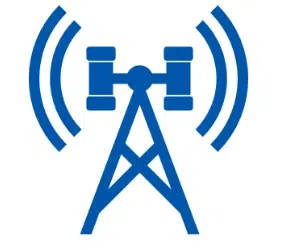The range of a typical cell tower can vary widely depending on several factors, including the tower’s height, the type of antennas and equipment it uses, the frequency bands it operates on, and the terrain and surroundings of the area it serves. Here are some general guidelines regarding the range of a cell tower:
- Macro Cell Towers: Macro cell towers are the most common type of cell towers and are often used to provide coverage over large geographic areas. They typically have a range of several miles, with the potential to cover a radius of 2 to 20 miles or more, depending on factors like tower height, frequency, and terrain.
- Micro Cell Towers: Micro cell towers are smaller and have a more limited range compared to macro towers. They are often deployed in densely populated urban areas to provide coverage in specific neighborhoods or city blocks. The range of a micro cell tower typically extends up to a few hundred meters to a couple of miles.
- Small Cell Towers: Small cell towers have a much shorter range compared to macro or micro towers. They are designed for localized coverage and are commonly found in urban and high-traffic areas. The range of a small cell tower is typically less than a mile, often covering a few hundred feet to a quarter-mile radius.
- Distributed Antenna Systems (DAS): DAS installations use multiple antennas distributed throughout a building, stadium, or other indoor/outdoor spaces to enhance coverage and capacity. The range of a DAS can vary depending on its design and the size of the area it’s intended to cover, but it is generally limited to the coverage area of the specific DAS deployment.
- Terrain and Obstacles: The physical terrain and any obstacles, such as buildings or natural features like hills and trees, can significantly impact a cell tower’s range. Line-of-sight and signal blockages can affect coverage.
- Frequency Bands: The frequency bands used by the cell tower’s antennas also play a role in determining its range. Lower-frequency bands, such as 700 MHz, tend to have better coverage and can travel longer distances, while higher-frequency bands, like 2.4 GHz or 5 GHz, have shorter ranges but offer higher data capacity.
- Technology Upgrades: Advances in wireless technology, such as the deployment of 5G, can affect the range and capacity of cell towers. 5G networks, for example, use higher-frequency bands for increased data speeds but shorter range, so they require more cell sites to maintain coverage.
Keep in mind that these are general guidelines, and the specific range of a cell tower can vary based on the equipment and technologies used by the wireless carrier, the network’s design, and the local network requirements. Wireless carriers strategically deploy a mix of cell towers, small cells, and other infrastructure to provide coverage and capacity tailored to the needs of their service area.
